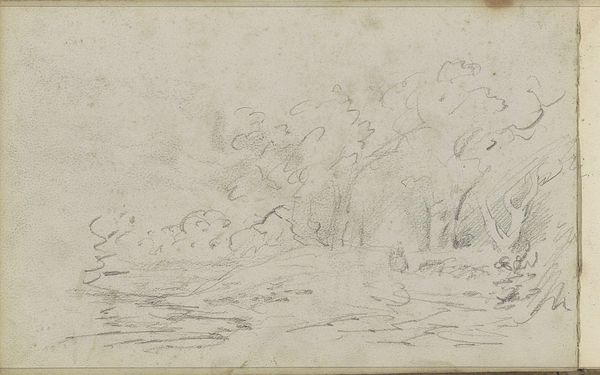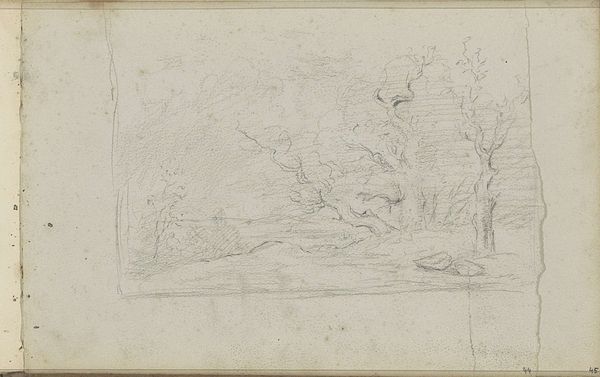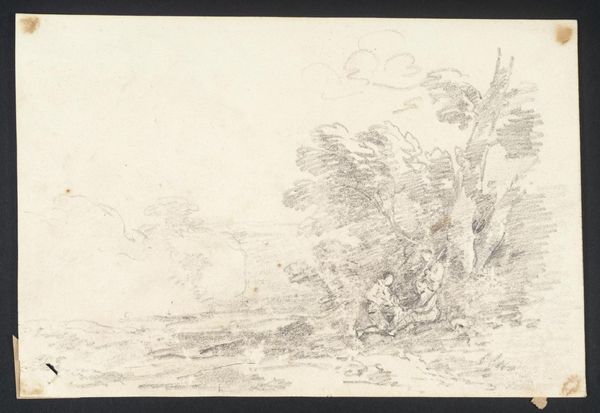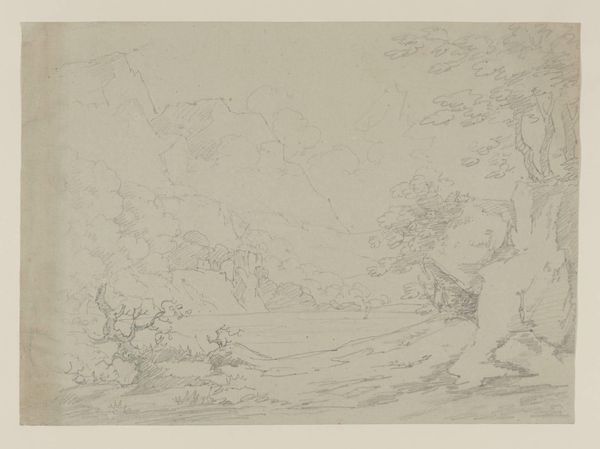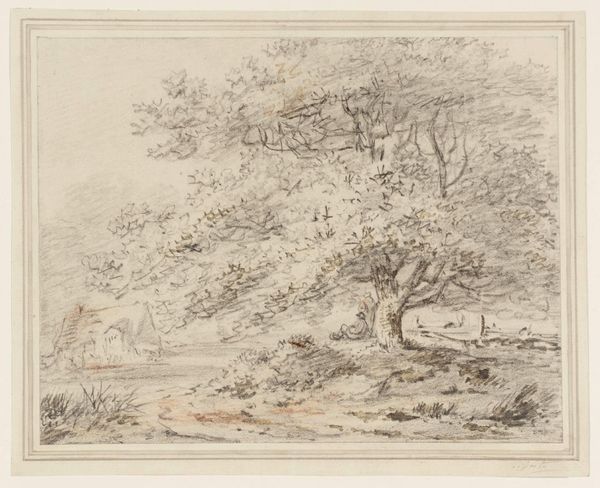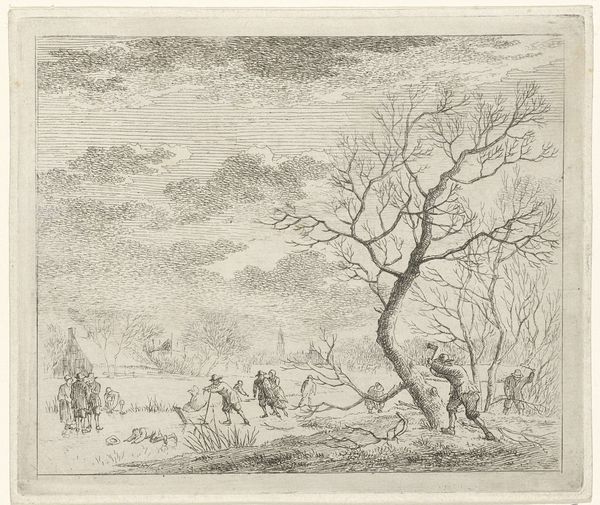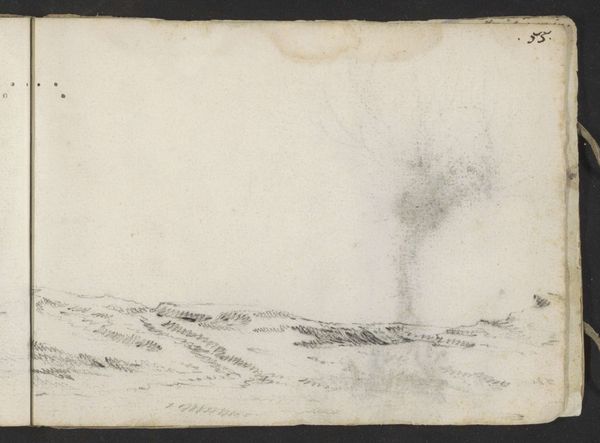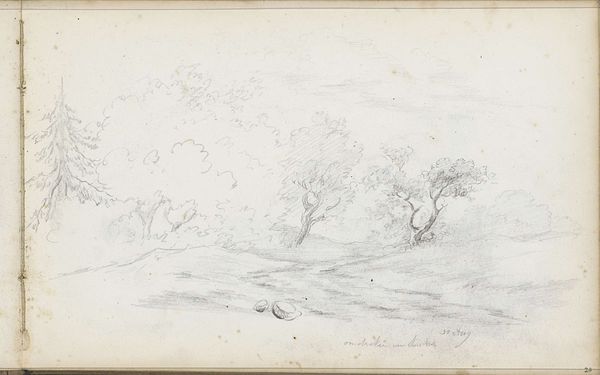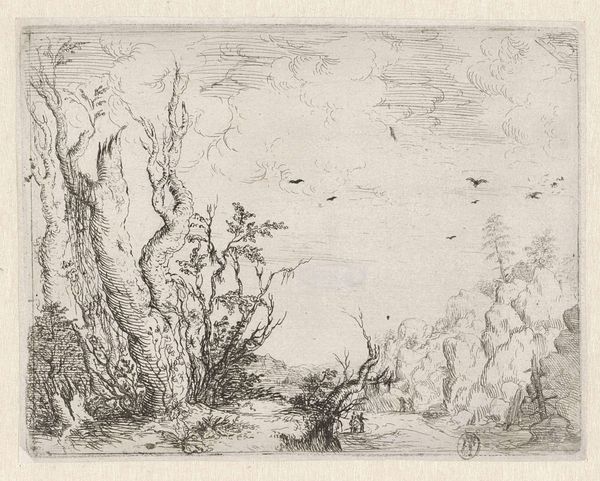
drawing, pencil
#
drawing
#
impressionism
#
pencil sketch
#
landscape
#
pencil
#
watercolor
Dimensions: height 184 mm, width 282 mm
Copyright: Rijks Museum: Open Domain
Editor: Willem Cornelis Rip’s "Heuvellandschap," created in 1874, employs pencil and perhaps a bit of watercolor in its rendering. I find this scene so delicate; its restrained composition imbues the landscape with an almost dreamlike quality. What stands out to you as you examine the socio-historical factors behind the artwork? Curator: Well, thinking about art institutions, consider how the sketch form itself gained prominence during the rise of plein air painting and Impressionism. Artists moved outdoors, seeking to capture fleeting moments. Was this sketch intended as a preparatory study for a larger painting, or as a complete artwork in itself? What do you think that distinction might signify within the artistic practices of the time? Editor: That’s interesting! If it's a study, perhaps it's an insight into Rip's creative process, usually hidden from public view. If it stands alone, maybe it's a statement about the value of the ephemeral, and immediate experience... Curator: Precisely! And what about the 'landscape' itself? Is it a purely objective representation, or does it reflect particular social attitudes towards nature, such as burgeoning tourism, national pride, or even colonial appropriation through depiction and control? Notice the strategic placement of possible ships. Do they offer insight into economic pursuits that might have influenced Dutch society and shaped perceptions of landscapes in that period? Editor: I didn't think about that, now the boats suggest a wider story! Tourism or even trade could connect directly with how the location was perceived. Curator: Exactly! Rip’s delicate touch may speak to an aesthetic ideal, but it also hints at those broader cultural contexts framing our perception of landscapes and nationhood, what do you make of the stain? Editor: I love the accidental mark. So the art and context combined affect perception of the historical period depicted, so thanks. Curator: It suggests that an art object gains from context.
Comments
No comments
Be the first to comment and join the conversation on the ultimate creative platform.
